Producers
-
Description:
Crealto is the creation of husband and wife Eleonora Costa and Luigi Armanino, originally from Genoa. In their former life, Eleonora was an audiologist and Luigi an engineer. Looking for a change of scenery and lifestyle, and already in love with traditional Piedmontese varieties, they responded to a promising real estate ad which led them to purchase 4.5 hectares of vineyard land from a man named Carlo Quarello. Little did they know at the time that Mr. Quarello was dubbed "the Master of Grignolino" by Luigi Veronelli, one of Italy's preeminent wine writers. Veronelli collected and aged Quarello's wines, made from this isolated vineyard outside the village of Alfiano Natta, in the far north of the Monferrato zone. There is not a monoculture of vines here, and only a few like-minded young producers working naturally. Eleonora and Luigi made their first vintage in 2008.
The vineyard sits at 350m in elevation, and consists of 2 hectares of 60-year-old Grignolino, as well as 3 hectares of Barbera and 1.5 hectare of Nebbiolo, both of which are 20 years old. The site was known as the Crè Alto (Crè is Piedmontese dialect for chalk). The estate is certified organic and all harvesting is done by hand. In the cellar the use of SO2 is kept to a minimum, with small amounts added after racking. The wines are often kept in tank for an extended period and released later than their peers. Since 2013, Crealto has declassified their wines in order to avoid the appellation’s tasting panel from interfering in their process.
They also run an agriturismo with creative local fare (adding a few Genovese touches, of course) and a guesthouse.
Image: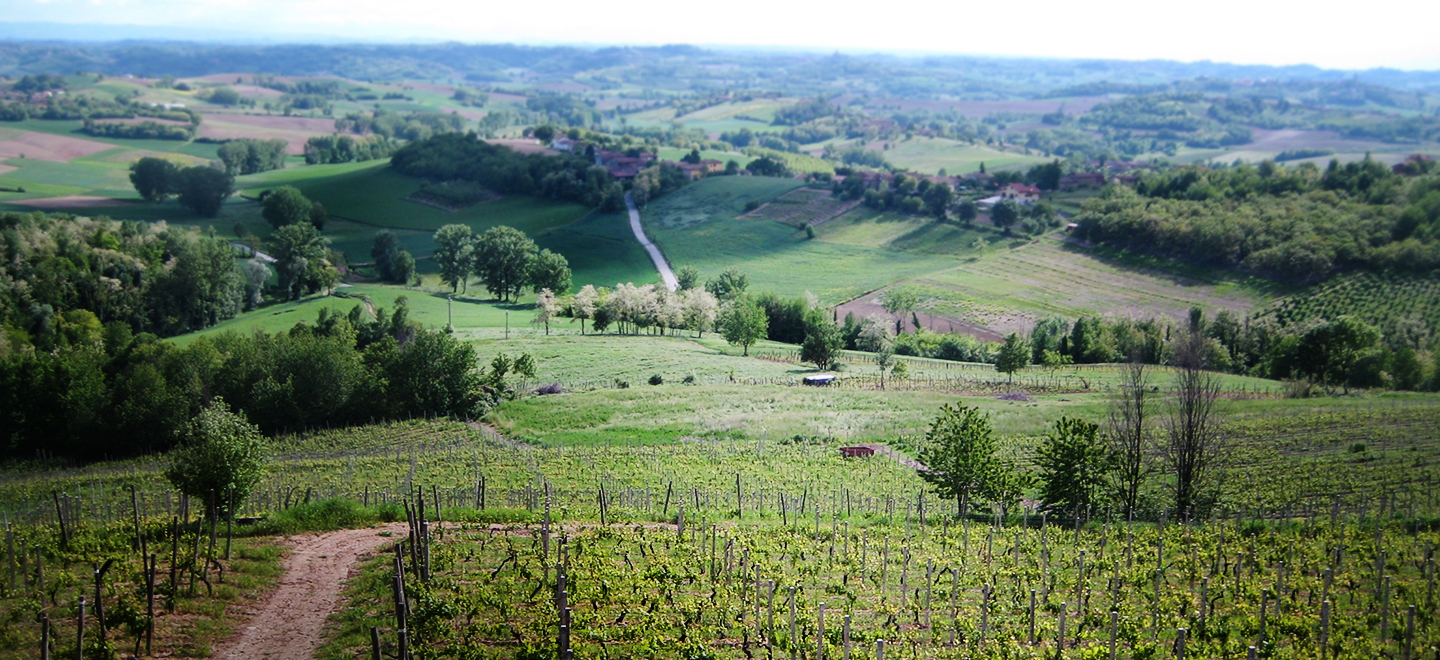 Region:
Region: -
Description:
Criante is a certified organic polyculture farm in Alcamo, Sicily. This is the western part of the island, in the province of Trapani, the dead-center of the Mediterranean Sea, a bit closer to Tunisia than to mainland Italia.
The Adragna family are the third generation to farm this land, though they have much deeper roots in Alcamo. Davide Adragna and his wife, Irene Figlia, are the face of the estate. 2019 was their first harvest under the moniker Criante, which incorporates all their farming activities.
As I introduce new wineries to Bowler’s portfolio, I’m increasingly searching for coherence, cohesion, and integrity. If something is described as project, it’s important that it’s not simply a commodity—it’s not enough to have a tasty, well-priced wine with a fun label slapped on it. The world has enough wine.
I knew shortly after meeting Davide and Irene that they were the real deal, two people invested in the traditions and future of their homeland, who happen to make wine. They clearly communicate what they’re doing and why, with quiet confidence. Seriousness with a smile. And they’re young. Frankly, they’re adorable!Criante’s operations are divided between 15 hectares of farmland (olives, legumes, eggs, heirloom Sicilian wheat and grains, fruit/vegetables including dry-farmed tomatoes) and 15 hectares of grapevines (Catarratto, Grillo, Nero d’Avola, Perricone). They own Sicilì Bottega Biologica, a small food and wine market in downtown Alcamo, where they sell all the things, including products from other like-minded Sicilian food and wine producers.
Their vineyards are divided between the towns of Alcamo (Contrada Modica—slightly more coastal, more sand in topsoil) and neighboring Calatafimi-Segesta (Contrada Valle—slightly more inland, more clay in topsoil). Though both areas fall within the confines of the Alcamo DOC, they prefer to use IGP Terre Siciliane or DOC Sicilia, as the parameters for Alcamo DOC are geared to fairly conventional wine. The paradox is that, to achieve Alcamo “typicity,” Criante would be forced to fine, filter, or otherwise add various enological products to their wine. They, and other Alcamo producers, have petitioned for more freedom.
West Sicily is a warm, semi-arid zone. It’s subject to the scirocco, an intensely hot wind coming off the Sahara, which can reach hurricane speeds. And yet, native varieties like Catarratto (Sicily’s most-planted grape and Italy’s third-most) have adapted to this climate over millennia, seemingly dealing with climate change better than many famous grapes of Central and North Italy. I’d like to think of Criante as Catarratto “specialists,” as they smartly tame its notorious yields and make three distinct wines from it, from each of the biotypes—Extralucido, Lucido, and Comune. The expressiveness and freshness are remarkable.
A lot is spoken about the “potential” of the deep South of Italy. Criante is part of a growing ferment of young estates inviting you experience that this promise has already been realized.
-Kevin Russell, Bowler Italy Portfolio Manager
To learn more:
@criante_
www.criante.it
@sicilibottegabiologica
www.sicilishop.comImage: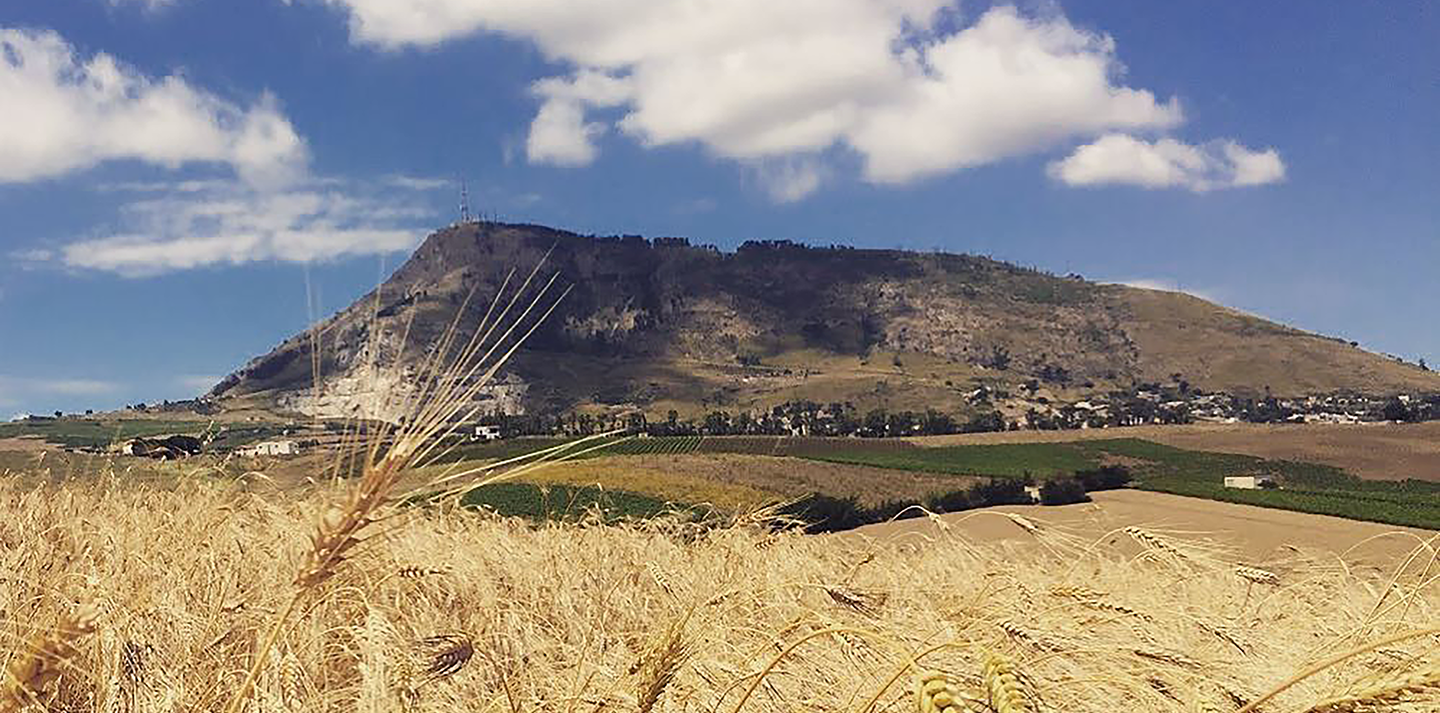 Region:
Region: -
Description:
Domaine de Cristia was established in 1942, with only two hectares of vines; at that time, all grapes were sold to négociants. When Baptiste Grangeon inherited the vineyards from his father in 1999, he was the first to bottle as Domaine de Cristia. Today, Baptiste manages the winery with his sister, Dominique, and they have gradually added vineyards over the years, to a total of 20 hectares of vines in Châteauneuf-du-Pape. Ninety percent of their holdings are in the lieu-dit Cristia, with the remaining ten percent spread over three different areas. These parcels are comprised of varying soil-types, including sand, clay, limestone, and galets, and benefit from a cool, fresh north-easterly exposition which allows the grapes and wines to develop supple, elegant tannins. Their Syrah and Mourvèdre vines average 55 years old and the oldest Grenache is over 100 years old.
The domaine follows organic agriculture for all work in the vineyards and has been certified from the 2008 vintage. No chemical fertilizers, herbicides or pesticides are used to treat the soils or the vines. Ploughing and weeding are practiced according to the blocks and the yields desired. Vines are treated with copper sulphate and sulphur occasionally blended with a nettle infusion/tea (four to five times a year). Only organic fertilizer (i.e., sheep manure) is used.
The grapes are selected in the vineyard and then destemmed before being put into vats. Three weeks of fermentation and maceration in concrete vats follow, with the use of indigenous yeasts. Temperatures are kept low in order to produce aromatic wines. They do not insist on any massive extraction, but prefer the ‘matière’ to express itself. Due to the work in the vineyards, the grapes possess enough concentration. The pressed juice and free-run juice are blended together according to the vintage. Châteauneuf-du-Pape wines are aged in concrete vats and barrels for a minimum of 18 months, while Côtes-du-Rhône and Vin de Pays are aged only in concrete vats for eight to 12 months. All of their wines are noteworthy for their finesse and elegance.
Image: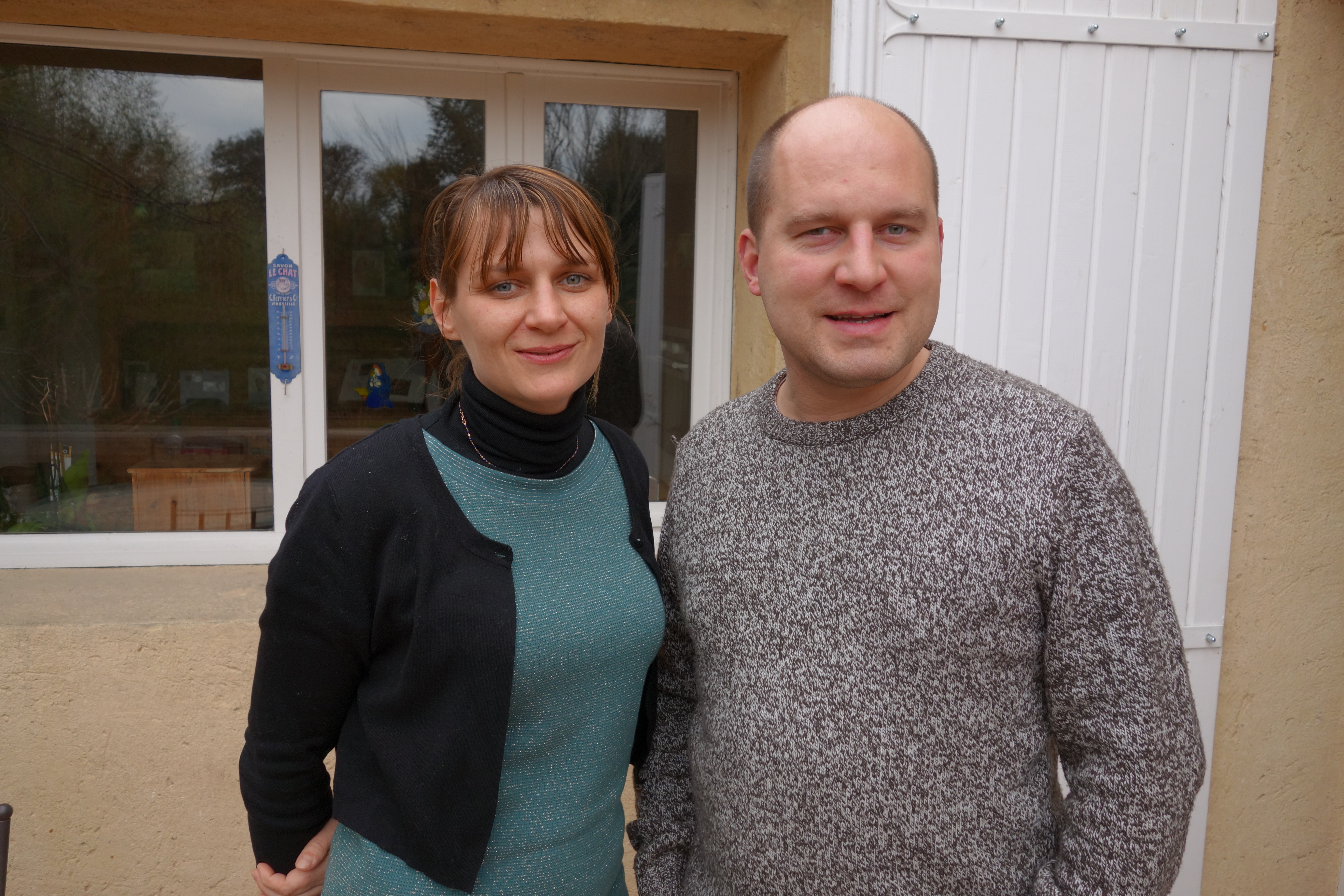 Region:
Region: -
Description:
Croci is a small estate in the westernmost winegrowing sub-zone of Emilia-Romagna, the Colli Piacentini, just south of the city for which those hills are named (Piacenza) and on the eastern border of the Lombardy region. Massimiliano Croci is the current generation of vignaiolo running what started as his grandfather’s property in 1935. His focus is the traditional wine of the area: white and red sparkling wines re-fermented in the bottle. Currently 8.5 of the total of 16 hectares are planted to vines—Barbera and Croatina for reds, Malvasia, Ortrugo and few others in small amounts for whites. The rest of the acreage support Croci’s dairy cows and the feed grain, hay and pasture for the animals.
In fact, milk was the main production of the farm until 1970. Massimiliano’s father realized that the family couldn’t compete with the industrial-scale dairy operations of the region and dumped dairy in favor of wine exclusively. It was made from estate fruit and was rustic in nature, sales being a mix of bulk—mainly in demi-johns that locals would stop to fill—and bottles in which the wine would naturally finish fermentation and be left as it was. In the 1980’s, very “clean” and clear, industrially grown and made wines became the standard. The Croci family pivoted to Charmat carbonation (tank method) plus heavy filtration in order to keep up with the times and to increase its production.
Massimiliano assumed the management of vine-growing and wine-making in 1999. He observed that the older, more rustic, bottled-fermented wines had held up much better and were much more expressive of the land over time. He quickly punted all things Charmat, stopped filtering and worked hard to bring the estate back around to his grandfather’s 1930’s approach. There are a couple of common shortcuts to making the local sparkling wines today: either to make them sparkle with the Charmat method and then dose them with lees to create a cloudy appearance that suggests country rusticity, or to ferment the wines to dry and add sugar to kick off a quick secondary fermentation (followed by filtration or not). Massimiliano’s “low and slow” approach is rare: the first and completely spontaneous fermentation slows down as winter approaches and eventually stops, picking back up again as spring warms up the partly fermented wines. He starts that process in cement and steel tanks, bottles the wines and allows the fermentation to continue and finish in the bottle slowly over what ends up being about a year but varies certainly. Sulfur usage is scant at most.
The old-fashioned approach in the winery alone distinguishes Croci but would matter much less if it weren’t for Croci’s distinctive terroir and impeccable farming. Their vineyard and winery are in the foothills of the Val Arda, named for a small tributary of the massive Po River. The parcels are mainly steep hillside plots of old vines at 250-300 meters on soils known as terre dei fossili dei piacentini, a loose sand full of fossilized, limestone-rich seashells (dating back about five million years to the land’s time as an ocean floor) combined with red clay. The vines are farmed entirely organically and harvested by hand, worked meticulously to achieve only moderate yields, all of which is atypical of the region. Overall production is modest: Massimiliano drastically cut back production, from 100,000 in his father’s time to 20,000 bottles by 2002. It has levelled out at around 40,000 today. By looking to the past, he has brought Croci firmly and distinctively into the modern era, with a focus on exceptionally high-quality, low-volume, traditional, re-fermented sparkling wines.
Image: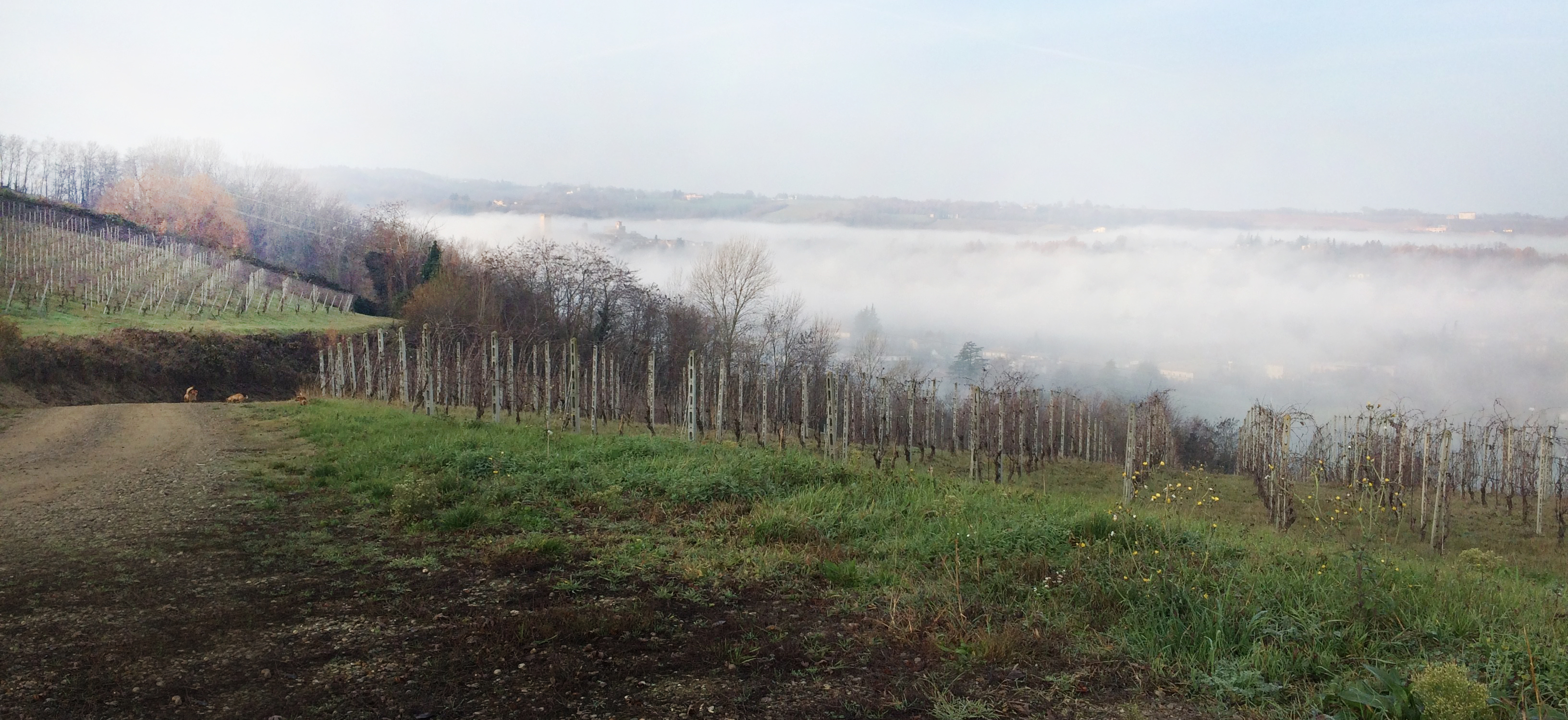 Region:
Region: -
Description:
Da Cruz e Teles is a partnership between two of the most brilliant vignerons/ winemakers from Portugal, Tiago Teles (Gilda, RAIZ) and Antonio Marques-da Cruz (Quinta da Serradinha).
The idea of working together started in 2015 when they approached the family of the late Jose Mendonça about working their vineyard in Figueira da Foz, a village north of Lisbon. This place was the main source of the grapes of Quinta dos Cozinheiros, the producer of a wine that became a reference point for the new generation of winemakers in Portugal, and which unfortunately came to an end with the tragic and untimely death of Mendonça. The vineyard, located just 5 miles from the Atlantic, proved ideal for the wines of Teles and Marques-da-Cruz. Its 50-year-old vines of Baga and slightly younger vines of Maria Gomes and Arinto are co-planted on clay-limestone soils and farmed organically. The proximity to the coast keeps the heat at bay and the grapes find great balance between ripeness and minerality.
Spurred by the success of their first vineyard, Tiago and Antonio purchased a 2-hectare vineyard in the Serra de Montejunto, a mountain range also in the region of Lisbon. This 35 year-old vineyard is planted on clay-limestone soils with Vital, a white varietal. Here too the farming is organic. They are not stopping here and are in the process of acquiring another vineyard in Lisbon planted with old vines of Baga.
With the introduction of the PoP labels, Tiago and Antonio are making slightly softer wines, with the reds fermenting whole cluster and shorter macerations. Tiago describes their philosophy perfectly here:
"Our objective with COZs is to make 'geographic wines' that express where they're from and age with dignity. We are not following trends, and don't want to make French, or Italian wines (however if pressed we'd say our wines are more of an Italian nature...) That is why we don't do carbonic wines, for instance. Portugal is a beautiful country but it is not perfect. I think that showing who we are is a nice way of doing things."
BOWLER E-Zine Issue 4 | January 2022: COZs, a Partnership of Two Brilliant Portuguese Winemakers
Image: Region:
Region: -
Description:
Located in the foothills of the Dolomite Mountains, Elisabetta’s tiny estate, with only 2 hectares under vine, is devoted entirely to the production of Pinot Nero. Her father also had planted Chardonnay, but that has since been grafted over to Pinot, of which a mere 760 cases of wine are produced each year. Viticulture has been biodynamic since 1999 and certified organic since 2001; thirty different types of cover crops are used, and the vineyards are densely planted to 8,000 vines per hectare.
The grapes are carefully selected in the vineyards and harvested in 10kg crates. Vinification is in large open oak vats, with spontaneous fermentation, respecting tradition. The grape bunches are partly de-stemmed and the only other operation is punching the cap. Aged in their 18th-century cellar in French oak, and released after an additional year in bottle.
Image: Region:
Region: -
Description:
In 2006 Brianne Day sold everything she owned and began traveling through wine regions all over the world. Over the following eight years she visited around 80 different regions, working at wineries in Burgundy, Argentina, Australia, and New Zealand. During this time, she re-established her home base in Oregon and worked at a number of wineries including The Eyrie Vineyards and Brooks.
From starting her own winery and releasing the first vintage of Day Wines in 2012, Brianne Day continues to produce a wide array of artisanal bottlings made from fruit sourced exclusively from a small group of Oregon growers who utilize Biodynamic, Organic, and/or Sustainable vineyard practices.
Day Wines are crafted with an attention to detail that allows for a minimum level of intervention in the winery - producing exceptional Pinot Noir, Chardonnay, and Syrah, as well as working with under-appreciated varieties such as Malvasia, Tannat, and Aligoté.
Image: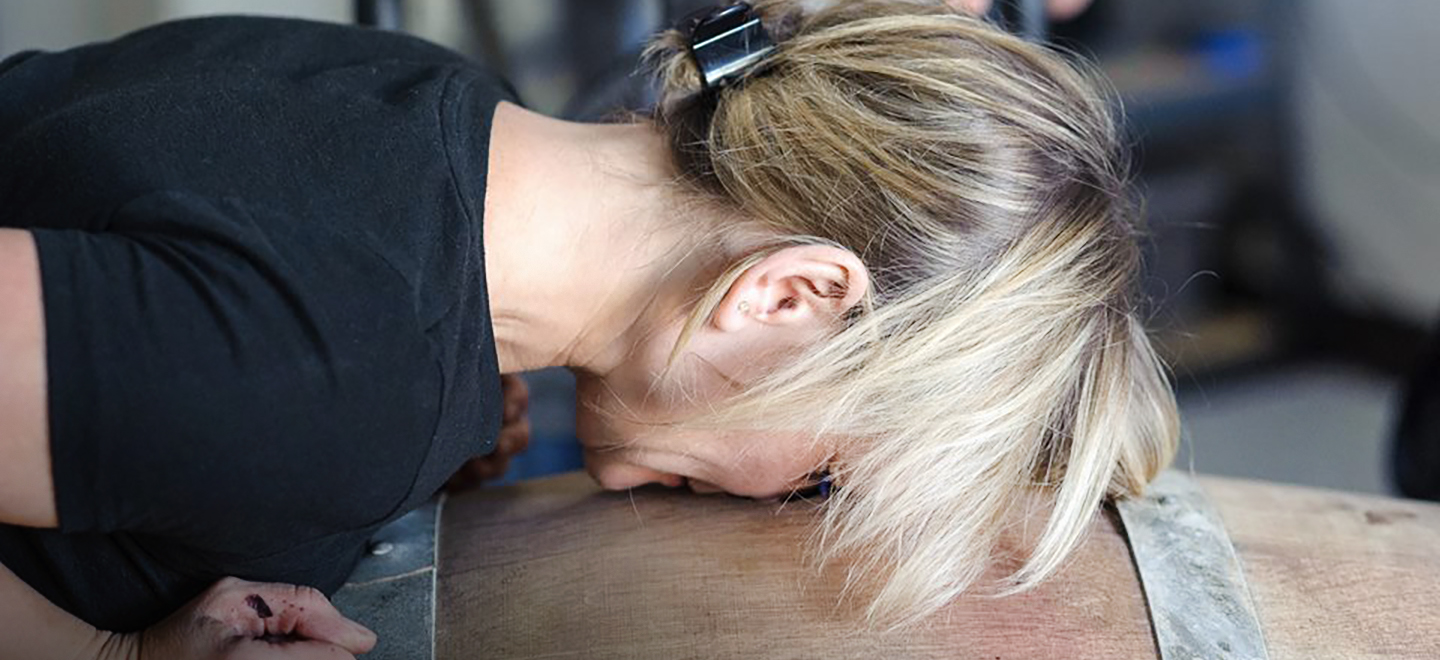 Region:
Region: -
Description:
This family-run estate is situated in Castel di Lama in the Ascoli Piceno region, in southernmost Marche, with vineyard holdings (45 ha) straddling the Abruzzo line. The main vineyard, in Offida, is hilly (280m-350m), with eastern exposure and a loose clay soil. First planted in the 1950s, the winery is managed today by proprietor/winemaker Quinto Fausti and his son Alighiero. Gambero Rosso notes that the Faustis practice “rigorous quality selection of the fruit,” ensuring that their whites and reds are among the finest values in Italy. All wines are fermented with native yeasts and adds a max of 80mg/L of Sulphur. Certified Organic.
Image: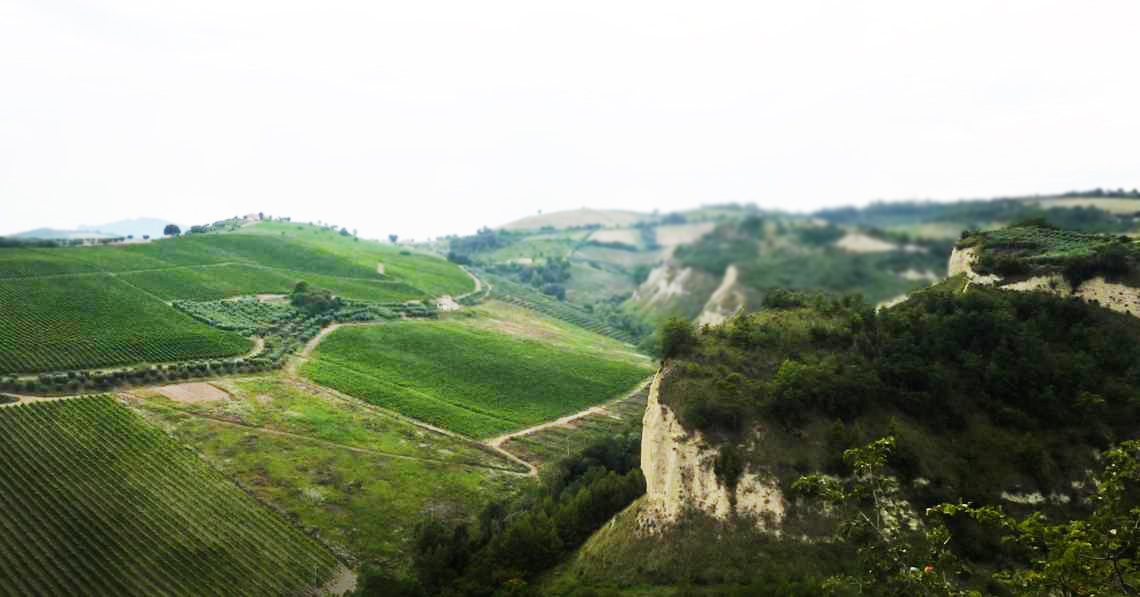
-
Description:
Thank you to importer Louis/Dressner for this profile of De Bartoli:
(Click here for much more on De Bartoli on Louis/Dressners's website or here for De Bartoli's own website)
Marsala production dates back to the 1770's, when the Englishman John Woodhouse accidentally stumbled across the local wine made in a method called il perpetuum, basically a fortified wine. He immediately shipped it back to England, where it was successfully received. In the following decades more British-born merchants arrived, production increased, a harbor and nearby warehouse was built for ease of transport (based on the Oporto model) and most importantly the solera system was imported from Madeira and Sherry. This prosperity continued through the next century and beyond 1860, when the Italian states unified (Garibaldi landed his unifying army of exiles in the port of Marsala - the rest is history). At that point, an important business man named Vincenzo Florio started bottling Marsala independently and under his own name. The wine steadily rose in popularity over the years, and by the early 1900's there were a 100+ wineries in the city of Marsala, most located right on the coast for easy exporting.
By the 1960's, local wine cooperatives had grown considerably and production started focusing on quantity instead of quality. Instead of using the indigenous and traditional Grillo, co-ops started blending all types of white grapes indiscriminately. Furthermore, fortification, chaptalisation and the addition of caramel food coloring or cooked must to give the illusion of advanced oxidation became commonplace. Predictably, the increasingly poor quality of Marsala slowly killed off the reputation of what was once highly distinguished wine. Even today, many still consider Marsala little more than cheap cooking wine for the staple recipes of Italian-American restaurants.Enter Marco de Bartoli. In his youth, Marco had worked with his father on his family farm near the town of Marsala. But his obsession with cars and a need for speed proved too strong, leading to a first career as a professional race car driver. Towards the end of this career, however, Marco was ready to turn a new leaf. Thinking back on his youth, he felt a deep sadness that the once proud tradition of Marsala had sunken so low. He decided he wanted to change this.
First, Marco reconstructed his family's old cellar on his mother's farm in the contrada of Samperi. Then he searched high and wide for old solera barrels of Grillo from local contadini. Much to his surprise, many were eager to part with these ancient relics, some even happy to give them to him for free! Next came the vines, planted progressively and exclusively in Grillo, which in Marco's eyes was and is THE ONLY grape to make Marsala due to its high acidity, ability to reach high degrees of alcohol and aging potential. Finally the wines: "Vecchio Samperi" represented the unfortified, traditional style of Marsala while the "Superiore" line was fortified with mistella (sweet must and eau de vie) as a statement that the cantina was not only rooted in the past, but well versed in the present and future.
In 1984, Marco started a new project on the island of Pantelleria, originally producing only a Passito. By the early 1990's, his had garnered a stellar reputation for being alone in making truly stunning expressions of Marsala terroir.
But the story doesn't end there. By the mid 1990's, Marco's children Renato, Sebastiano and Giusippina had all joined him in this work. Youthful energy led to new experiments, most notably dry white wines from Grillo and later Zibibbo from Pantelleria. While chemicals had never been used in the vineyards and the Grillo for the Marsala was never yeasted, conventional yeasts were used on the dry whites until 2006. Sebastiano elaborates on working organically and using native yeast fermentations:
"Our idea was always to make wine as a product of the land so we have always eschewed systemic chemicals. I do not remember a particular date we followed this course (organic), but I can tell you that about ten years ago I personally began to follow this campaign and have been sure of it ever since. I distinctly remember that even before then my father did not want to do intensive agriculture and prevented the farmer who worked our lands from using fertilizers, herbicides and so on...
Up to now we did not seek organic certification because it did not seem a serious approach and my father's point of view was never to have "organic" be a selling point for his work. But my dad was extreme and today organics seem to be a more serious issue. We understand the need for people to have the certification, so we are now seeking it.
For the indigenous yeasts, the key was the production of the "Integer" in 2006. I am not reneging the selected yeast used in the 90's because it allowed us to understand an innovative form of Grillo and Zibibbo. But with the experiments of the Integer we understood the potential of the land was far more important than so many other things, knowing also that it was more risky. It may not always be the same for the tastes and aromas of the wine, but it certainly enhances the territorial typicity."
Image: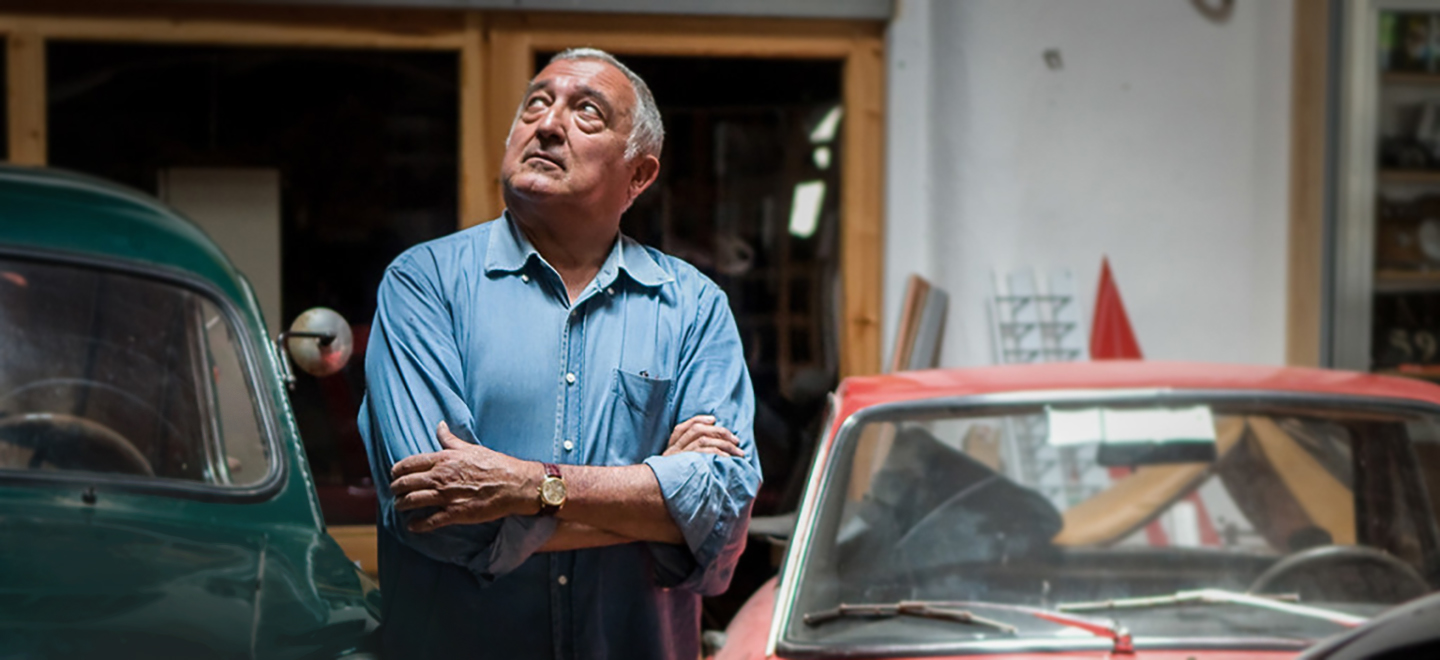 Region:
Region: -
Description:
Thank you to importer Louis/Dressner for this profile of De Fermo:
(Click here for more on De Fermo on the LDM website)
The story of De Fermo, a relatively new estate founded in 2010 by Stefano Papetti Ceroni and his wife Eloisa de Fermo, is an unconventional one. Originally from Bologna, Stefano does not come from an agricultural background but nonetheless took interest in wine at a very young age. He began a tasting group with his friends in high school (including his best friend Federico Orsi) and started visiting wineries as soon as he was old enough to do so. By Stefano's early 20's, wine had become his passion.
While studying law in Bologna, he met his future wife Eloisa. In their early years together, weekend trips to wineries became the norm. In 2007, seven years after the couple had met, Eloisa proposed they visit her family farm in Abruzzo; it that had been in the de Fermo family for generations but she had no real connection to it. Not expecting much, Stefano was shocked to discover a sprawling, ancient property with a rich history:
"The first document stating viticulture in our farm is the Chronicon Casauriense (IX century), a chronicle of San Clemente abbey in Abruzzo. That document states the sale of our land by a Lombard-Frankish family to the abbey. The monks kept the farm alive for centuries. Our family bought the farm in 1785."
Stefano fell hard for the De Fermo farm. In the winter of 2007, he began spending every weekend in Abruzzo, learning from the contadini hired by Eloisa's family to run the property. He eventually asked his father-in-law if he could manage a hectare of vines to teach himself viticulture, providing a first glimpse of what owning a winery could be like. But with he and Eloisa holding down successful law careers in Bologna (not to mention two new-borns), the idea seemed too crazy. And with no money to invest in the cellar he dreamed of building, it seemed like the weekend visits would have to do.
In 2009, Stefano asked the old man managing the property to see what was in the old farm house that had been abandoned since 1940's. Unbeknownst to Eloisa, he discovered an underground cantina in the basement. After testing it for temperature and humidity, a small restoration was done on the old concrete tanks, two barrels were purchased and 32 hectoliters of wine were produced in 2010, roughly 4000 bottles. Production increased each year, and by 2013 Stefano was managing all 16 hectares of vines, keeping the best grapes for the De Fermo estate and selling off the rest.
Today, almost all of the grapes go into the estate's independent production. For vines, 11 hectares of Montepulciano are planted along with 2.5 hectares of Pecorino, 2.5 hectares of Chardonnay and and 0.5 hectares of experimental white grapes including Trebbiano and other white varieties.
The terroirs here are widely considered amongst the best in the region. While the vast majority of vines in Abruzzo are trained in pergola, the contadini who managed the farm prior to Stefano (despite the entirety of the grape production being sold off) had meticulously maintained the vineyards' training systems of Cordon de Royat and alberello. The pergola "tradition" is a post-World War 2 phenomenon and also a sure-fire way to get very high yields. De Fermo is one of the only estates in all of Abruzzo to not own a single pergola vine. As a result, yields are often 50% lower than their average neighbor. The concentration in the wines is evident and a big part of what sets them apart.
Stefano and Eloisa have now fully reclaimed the property and are working the olive trees, wheat fields, vegetable gardens and raising animals in addition to tending the vines. This push for biodiversity very much stems from their dedicated, thoughtful approach to biodynamic farming, a philosophy that resonates in every aspect of their lives.
Image: Region:
Region: